Learn how to Garden at Home
Be the Gardening Guru of your Street
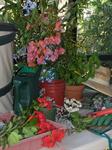
- More than your average home gardening course.
- Comprehensive learning covering every aspect of home gardening.
- Understand the science, the soils and techniques.
- Diagnose and correct the problems.
- Start any time, study anywhere and at your own pace - guided by a team of leading UK and international horticulturists.
- Course Duration: 100 hours of self paced study.
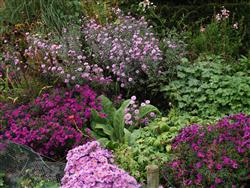
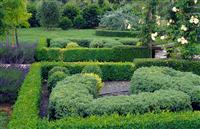
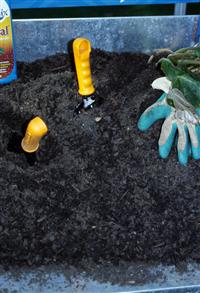
This huge course covers everything a home gardener needs to know to become a gardening expert. With almost 100,000 words (the size of three average books), plus expert tutor support, this course provides a unique and well-structured opportunity to develop a very sound understanding of gardening.
- The online and CD version also contain large numbers of automated self assessment tests.
- 8 units each comprising 2 or 3 lessons,
- Each lesson involves both reading and practical work.
COURSE STRUCTURE AND CONTENT
There are 8 lessons in this course:
1. Basic Plant Identification & Culture. Plant names, planting, transplanting, tools & equipment.
2. Soils & Nutrition. Soil structure, nutrition, composting, soil building, drainage, fertilizers.
3. Pests & Weeds. Identifying problems, sprays, biological control, weed identification & control.
4. Landscaping. How to design a garden, rockeries, native gardens, traditional (European style) home gardens.
5. Propagation. Propagating materials, seed, cuttings.
6. Lawns. Turf varieties, laying a lawn, lawn care.
7. Indoor Gardening. Hardy indoor plants, container growing.
8. The Kitchen Garden. Vegetable gardening, fruit trees, herbs.
Each lesson culminates in an assignment which is submitted to the school, marked by the school's tutors and returned to you with any relevant suggestions, comments, and if necessary, extra reading.
AIMS
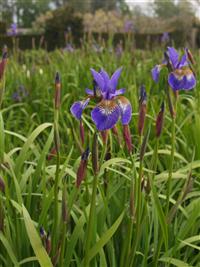
-
Identify plant health problems and know treatments.
-
Know the plant naming system and how plants are classified.
-
Understand the effect of soil structure and texture on plant growth.
-
Understand plant terminology and planting methods.
-
Understand plant pruning requirements and methods
-
Know plant nutrition requirements
-
Understand soil conditions and when they require improvement.
-
Recognise a range of pests and diseases and the methods of control.
-
Recognise a range of weeds and know various control methods.
-
Know a range of garden styles and the history behind them.
-
Have knowledge of landscape construction techniques.
-
Understand the elements and processes of landscape design.
-
Understand various propagating techniques
-
Propagate plants by various methods
-
Understand the soil preparation and requirements to establish or renovate a lawn
-
Know lawn maintenance requirements.
-
Understand requirements, including environmental and nutritional aspects of growing plants indoors (including hydroponics and greenhouses).
-
Know how to select plants suited to growth indoors
-
Develop knowledge of vegetable growing procedures and requirements.
-
Have knowledge of a range of fruits and berries suited to the home garden
-
Have knowledge of a range of commonly grown herbs and flowers
WHAT WILL YOU DO IN THIS COURSE?
Here is just some of what you will do:
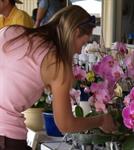 Read notes written and supplied by staff of this school
Read notes written and supplied by staff of this school- Watch instructional videos
- Test and name different soils
- Mix inexpensive potting mixes
- Make compost and explain how you made it.
- Learn how to identify plants effectively.
- Explain step by step how you would go about planting shrubs in your own locality.
- Explain how to transplant and transport plants from one property to another.
- Determine the tools required to do gardening for a property, using a limited supply of money.
- Explain characteristics of soil, including: Soil Structure, pH and Nutrient Deficiency
- Describe how to fertilize a lawn
- Explain how to improve drainage in a soil that is too wet for plants to do well in.
- Explain how you would improve a specified soil
- Identify a nutrient deficiency
- Observe and identify different categories of pest and disease problems in growing plants.
- Compile a weed collection with pressings or illustrations of different weeds
- Compile a plant collection with pressings or illustrations of different weeds
- Describe how environmental problems affect plants
- Recommend ways of controlling different types of problems in plants, using both natural and chemical.
- Observe and evaluate different types of gardens.
- Survey a garden in order to prepare a garden design.
- Apply a systematic procedure to landscape design, in order to produce a concept plan for a garden.
- Explain mistakes have you observe in the design and construction of different rockeries
- Build a simple cold frame and use it to propagate plants.
- Prepare propagating mix which would be suitable for striking most types of cuttings.
- Propagate different plants from cuttings.
- Prepare a plan for sowing annual flower seedlings over a 12 month period.
- Evaluate and explain a lawn seed mix from the packaging of that mix
- Observe different lawns and recommend their treatment
- Explain how to establish a lawn
- Observe and evaluate the condition of different indoor plants.
- Recommend the treatment of different indoor plants.
- Prepare lists of indoor plants for different applications.
- Find an indoor plant which needs potting up & pot it up.
- Plant a vegetable patch.
- List fruit, nuts & berries most suited for growing in your locality
- Observe the way in which herbs are used commercially (eg. in medicine, cooking etc)
- Explain why crop rotation is used in growing vegetables?
Tips for Better Water Use
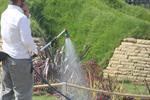 Water is a precious commodity. In fact, it is becoming more precious than ever before. Gone are the days when you could stand there watering your plants with your hose on full bore and not be overcome with guilt. To do this nowadays would be to incur the wrath of any conscientious citizen, never mind the expense.
Water is a precious commodity. In fact, it is becoming more precious than ever before. Gone are the days when you could stand there watering your plants with your hose on full bore and not be overcome with guilt. To do this nowadays would be to incur the wrath of any conscientious citizen, never mind the expense.
Water bills can be painfully high, water restrictions can limit usage, and building more dams is not only expensive but it can destroy native landscapes and severely affect the distribution of endangered species.
Sustainable water management isn’t only about us collecting our own water and cutting down on what we use from the mains supply; it is also concerned with when and how we use it, and getting the best value from what we use.
Reduce What You Use
We can’t reduce the amount of water we drink, but we can share bath water or take shorter showers. We can turn off the tap when brushing our teeth and be sensitive to how long we leave a tap turned on whenever we use it. We can also all use less water to achieve the same thing in our gardens. For example, water gardens and swimming pools can lose a lot of water through evaporation which can be easily reduced:
- Fountains and waterfalls increase evaporation - so turn them off!
- Heated water evaporates faster - so turn the solar heater down or off!
- Wind increases evaporation – use windbreaks!
- Direct sunlight increases evaporation (also promotes algal growth) - so shade the pool! Use a pool blanket.
Apply Water the Best Way
- Don't have sprinklers set up to water indiscriminately - target specific plants.
- Use drip irrigation rather than sprinklers.
- Don’t use fine mist settings on hand held hoses - mist blows away in the wind and evaporates.
- Don't use mist sprinklers – they also waste water.
- Water close to the ground - water travels further and longer in the air and can be blown off target or evaporate.
- Keep water off plant foliage - wet leaves can promote fungal diseases, and also roots absorb more water than leaves.
- Try not to waste water by inadvertently watering walls, pathways, decks and the like.
The Time Factor
Time plays a pivotal role in water usage.
- Time of day - watering in the cool of the evening in summer means less water is lost by transpiration from plants and through evaporation from soil.
- Length of time – don't overwater plants. Learn to observe plant leaves for wilting and test soil moisture. Never assume you need to water.
- Timing - there may be little sense watering plants if there has been a heavy downfall the day before. Turn off automatic irrigation systems if they are set to come on.
- Adjust to the temperature – you don’t simply water more on a hot day, you water more when the plants need it. That may or may not be a hot day.
- Adjust to the weather - don’t water when it is windy.
- Use automatic systems properly - set watering times and days to suit the seasons. Don't just leave them the same throughout the year.
- Install a rain sensor - these are a great addition to automatic irrigation systems. They will turn them off during periods of rain.
- Rate of flow - apply a small flow of water over a longer period. It soaks in deeper and spreads out less.
Make Your Soil Water-Friendly
Some soils repel water, some absorb and hold a lot of water in reserve; but others only hold small amounts. Water can be lost by running off the surface of hard clay soils and it can escape by rapidly draining through sandy soils. Soils with greasy organic particles can repel water much like greaseproof paper, but the right type of decomposed organic particles will act like a sponge allowing the soil to soak up lots of water and hold it. These soils don’t need to be watered as often, and they don’t waste water as much.
Another option is to add water crystals to the soil. These are particularly useful in containers. Crystals absorb water and release it slowly over a long period of time, so if you forget to water or go on holiday your plants have a better chance of survival. If you don't like the idea of crystals, wetting agents are a good alternative – they will rewet water repellent soils and allow them to absorb water. They are diluted and watered onto the soil and will last for around six months.
Here is what our Students have said:
"This is the first correspondence course I have done and I have
thoroughly enjoyed it and I just wanted to say a big THANK YOU. I
appreciate everyone's effort in such a professionally-run organisation
with seamless administration. The office staff's happy can-do attitude,
their fast responses to all queries, tutor Shane Gould's quick
turnaround in assignment marking and his supportive and motivational
feedback and last but not least, the sound subject guides. Most
importantly I hope my thanks and appreciation can be communicated to all
the staff who have supported me along the way of my learning! I work
full time and study on the weekend but really don't stop thinking about
what gardening solution I need in order to answer my assignments every
day of the week. Thank you for such a great learning experience and I
can't wait to start the second half of my course!!"
- Skye
: "This is a great course for anyone interested in plants. There
is lots of information in each manual, and plenty of time to do each
lesson to give it your best shot. The manuals are really easy to
understand, and the lessons are set out clearly. My tutor is very nice,
and if need be, you can ring ACS for help. There are lots of avenues for
getting information. Students who really want to learn will always find
a way." Pauline Ross, Home Garden Expert
WHAT NEXT?
Register to Study - Go to “It’s Easy to Enrol” box at the top of the page and you can enrol now.
or
Get Advice – Email us at info@acsedu.co.uk OR
Use our FREE COUNSELLING SERVICE to contact a tutor
CLICK TO CONTACT US